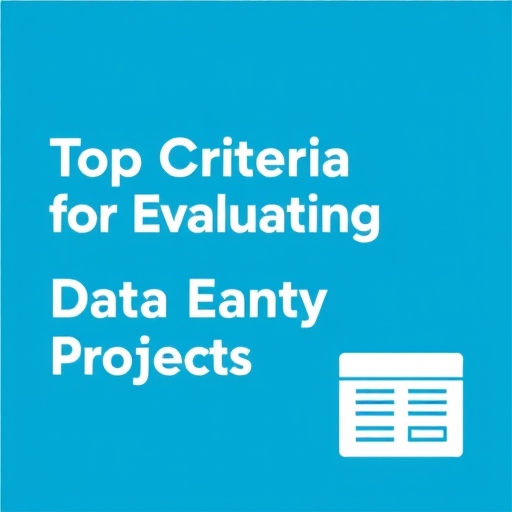Top Criteria for Evaluating Direct Data Entry Projects
When evaluating direct data entry projects, it’s essential to consider several key criteria to ensure the project is suitable, efficient, and meets your objectives. Here are the top criteria:
1. Accuracy and Quality of Data
- Precision: Ensure the project requires data to be entered correctly without errors, as incorrect data entry can affect decision-making or business outcomes.
- Data Validation: Check whether the project has mechanisms in place to ensure that the entered data is validated and conforms to predefined standards.
2. Volume and Complexity of Data
- Data Size: Evaluate how large the dataset is. Larger projects may require more resources and time, while smaller projects can be quicker to complete.
- Complexity: Some data entry tasks may be straightforward (e.g., entering names and numbers), while others may require specialized knowledge (e.g., medical, legal, or technical data). Assess whether the complexity aligns with your capabilities.
3. Time Frame and Deadlines
- Project Duration: Determine how long the data entry project will take, considering the volume and complexity.
- Deadline Sensitivity: Understand if there are strict deadlines for completion and whether these align with your capacity to deliver on time.
4. Tools and Software Requirements
- Platform: Evaluate the tools and software the project requires. Check if they align with your existing systems or if you need to invest in additional tools.
- Automation Potential: Consider whether any parts of the process can be automated to reduce time and human error.
5. Security and Confidentiality
- Data Sensitivity: If the data involves personal, financial, or confidential information, ensure there are strong security measures in place to protect it.
- Compliance: Verify if the project complies with relevant data protection regulations (e.g., GDPR, HIPAA).
6. Skill Level and Expertise
- Required Skills: Determine the level of expertise needed for data entry, such as familiarity with specific databases, proficiency in Excel, or technical expertise for certain types of data.
- Training: Consider whether any training is required before starting the project, especially if it involves specialized knowledge.
7. Budget and Cost Efficiency
- Cost of the Project: Evaluate the budget for the data entry project. Ensure it fits within your financial resources, and check if it compensates fairly for the time and effort required.
- Value vs. Cost: Assess whether the cost of completing the data entry project aligns with the expected benefits or outcomes.
8. Communication and Support
- Clear Instructions: Ensure that the project provides clear guidelines and detailed instructions on the data entry process.
- Support Availability: Confirm if there is readily available support in case any issues arise during the project.
9. Scalability and Flexibility
- Scalability: Assess whether the project can be scaled up or down easily if the volume of data increases or decreases.
- Flexibility in Adjustments: Determine if adjustments can be made if unexpected changes occur in the data entry requirements.
10. Reporting and Tracking
- Progress Monitoring: Check if there are mechanisms in place for tracking progress and quality assurance during the data entry process.
- Final Reporting: Ensure that the project provides a way to monitor the final outcomes and assess the success of the data entry effort.
11. Integration with Other Systems
- System Compatibility: Assess whether the data being entered needs to be integrated with other systems, like CRMs or ERPs, and whether this is feasible.
- Import/Export Requirements: Verify if the data needs to be exported in specific formats and whether this aligns with the project’s needs.
12. Risk Management
- Potential Issues: Evaluate the risks involved, such as data loss, errors in data entry, or the need for rework.
- Mitigation Plans: Ensure there are strategies in place to mitigate these risks, such as backup systems or contingency plans.
Conclusion:
Evaluating direct data entry projects involves assessing accuracy, complexity, timelines, and the resources required to complete the project. By carefully reviewing these criteria, you can determine the feasibility, risks, and potential return on investment for the project, ensuring it aligns with your capabilities and goals.

We are also on Facebook
Go back to home page: www.mistyinfotech.com
If you want to Direct Data Entry Projects with Company with Us Please go here: Direct Data Entry Projects with Company







